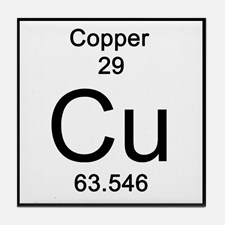Question #b220e
1 Answer
Here's what I got.
Explanation:
You can find the average atomic mass of copper,
The average atomic mass is added at the bottom of the element box; in copper's case, you have an average atomic mass of
Now, the average atomic mass of a given element is calculated by taking the weighted average of the atomic masses of its stable isotopes.
The weighted average refers to the fact that the abundance of each isotope determines its contribution to the average atomic mass of the element.
#color(blue)(ul(color(black)("avg. atomic mass" =))) sum_icolor(blue)(ul(color(black)( "isotope"_i xx "abundance"_i)))#
Keep in mind that the above equation uses decimal abundance, which is simply percent abundance divided by
So, you know that copper has two stable isotopes and that copper-63 has an abundance of
#69.17% = (69.17color(red)(cancel(color(black)(%))))/(100color(red)(cancel(color(black)(%)))) = 0.6917#
This means that the second isotope will have an abundance of
#100% - 69.17% = 30.83% = (30.83 color(red)(cancel(color(black)(%))))/(100color(red)(cancel(color(black)(%)))) = 0.3083#
If you take
#"63.546 u" = x * 0.3083 + "62.939 u" * 0.6917#
Rearrange to solve for
#x = ("63.546 u " - " 43.535 u")/0.3083 = color(darkgreen)(ul(color(black)("64.908 u")))#
I'll leave the answer rounded to five sig figs.
To find the identity of the second isotope, i.e. its mass number, round the atomic mass to the nearest whole number. In this case, you have
#64.908 ~~ 65#
The second isotope is copper-65, or


